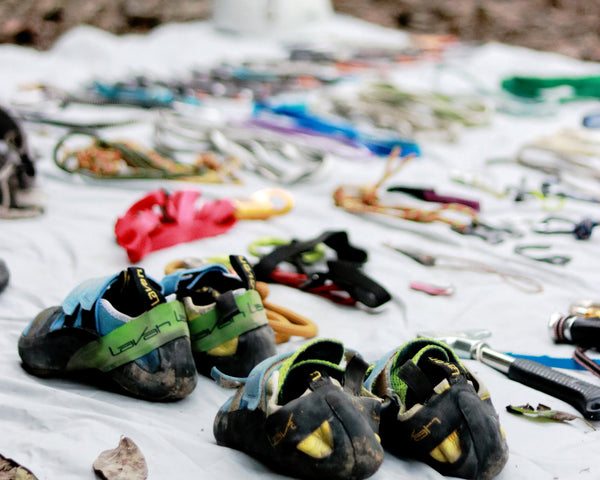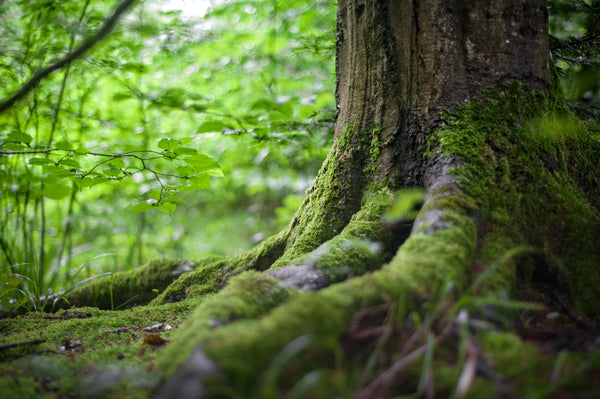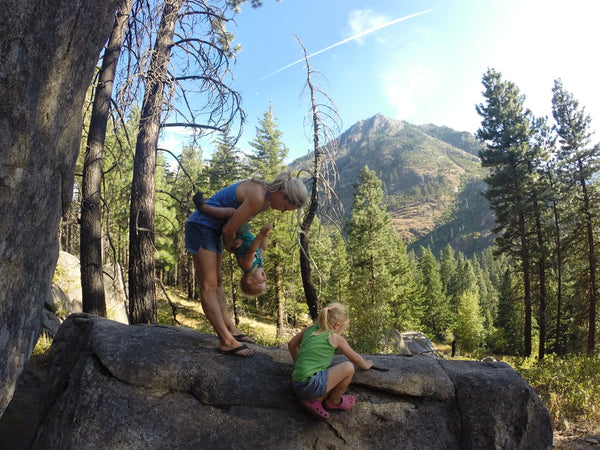Bouldering Basics | Part 1 | Spotting Technique - Climbing Lingo - Types of holds

Whether you are getting into bouldering for the first time, searching climbing tips and tricks, or needing a quick refresh, our ‘Bouldering Basics – Series’ will polish and hone your Bouldering street cred. In this SERIES, we will share proper usage of Climbing Lingo, review common Climbing Holds & Shapes, and proper outdoor Spotting Techniques. Be inspired, learn something new and follow this series to stay up to date on all things Bouldering!
BOULDERING LINGO:
Just like any sport, bouldering has its own set of ‘crag’ slang. And when used in good context (meaning, don’t combine them all in one sentence), you’ll fit in like a seasoned vet. While these bouldering terms and definitions won’t necessarily help you crush your next ‘proj’ (I’ll explain that one too), they will help you act a little less like a rookie at your local climbing gym or crag.
- CRAG | A term used to describe a general climbing our bouldering area. May also be used in context of a group of boulders or outcropping. [USE – “I’m heading to the crag”]
- PROBLEM | A bouldering route. [USE – “…one of my favorite problems”]
- PROJECT (aka – proj) | A bouldering problem or route that an individual is trying to complete. Unfinished problem. [USE – “That’s a cool project”]
- SEND | When you complete a bouldering problem. [USE – “Nice send bro!”]
- PUMPED | This happens when lactic acid builds up in your forearms making it hard to grip and climb. [USE – “I’m totally pumped after that send”]
- BETA | A description on the ideal way to climb a problem. Shared insights on how to send it. [USE – “…this beta worked for me”]
- DYNO | A moment when your hands and feet are simultaneously in air as you are airborne leaping for a hold. [USE – “…who needs footwork, just dyno for it”]
- MANTEL | A position when topping out a boulder problem by pulling over the lip and pressing with your arms to get over the top. [USE – “Damn that mantel was sketch!”]
- CRUX | The hardest part of a problem [USE – “That crux is super stout”]
- DEADPOINT | A movement when you slow your motion to grab a hold with minimal swing and motion after gripping. [USE – “You’ll have to deadpoint it in order to hold on”]
- GRADE | Is a number system stating how hard a problem is from V0 to V17. Based on the V grade system, higher is harder. [USE – “Oh…it’s a V4”]

Types of rock-climbing holds:
Learning what types of holds comprise a bouldering problem will quickly help your find routes through bouldering guidebooks and ‘beta’ (you should know that term now) from local climbers. Study often, try each type and you just might find a favorite or two.
- Jug/Bucket | A very large hold where you can wrap most of your fingers and hand around.
- Crimp | A small hold, typically the size of your finger nail, give or take a little.
- Hueco | Found most often in the Southwest – is typically a large rounded pocket.
- Sloper | A rounded or sloping hand hold. Typically held open handed, palming the hold.
- Pinch | When you grip a type of hold between your thumb and fingers.
- Pocket | Small hole where you can fit about 1 finger in.
- Undercling | When a hold is gripped from the bottom so you can pull up.
- Flake | A piece of rock that is slightly detached from the wall that creates a crack to jam hands and feet into.

Proper Spotting technique when bouldering:
For many who started their bouldering adventures in a climbing gym, there’s little notion to the importance and fundamentals of proper spotting when bouldering outdoors. Once you venture outside of those padded walls, spotting turns from snapping selfies of yourself, while your friend climbs, to crucial principles that can save injury or even the life for your fellow boulderers. Take it seriously, and be vigilant to show your support for those on the rock.
- Communication is key | When spotting, let your climbing partner know you ‘have them’ and are watching their every move. Be watching for shaking knees, delayed breathing and signs of ‘pitching’ off the top. When climbers are topping out, remind them to stay focused and finish strong. Always keep a good spot 1-2 seconds after you see them pull over the lip or top-out.
- Keep good bouldering pad coverage | As a spotter, it’s your responsibility to properly shift bouldering pads to cover protruding rocks or gaps between pads. Move quickly, always keep your eyes fixed on the climber as you reposition pads to protect potential falls.
- Proper spotting technique | As your partner starts to climb, it’s important to keep a slight bend in your knees and your feet should be spread apart to stabilize yourself from falling climbers. I recommend keeping your hands in a diamond shape with your fingers spread. The idea is to keep your hands close but spread about 10” apart. Focus your arms towards the hips or torso of your partner as they climb. If they fall, it's your job to direct and slightly push their hips to vertical position, allowing them to fall naturally onto the pads. You job is not to catch them, but rather ensure they land on their feet by keeping their hips vertical when falling. It’s all about the hips, don’t worry about their arms and legs, keep focused on keeping them upright and positioned onto the pads.
- Spotting highballs | Similar principals apply here, with the addition of spatial awareness. As your partner ascends the 15-foot zone, be extra aware of properly stacked pads and your positioning in relation to their fall trajectory. You, just like your partner, need to stay calm. Don’t offer nervous banter, let them focus and keep a steady eye on your proximity.
- PhD in post falling | If a hard impact ensues from a fall, make sure you assess the health of your climbing partner. Survey the fall, any impact areas and encourage a little downtime if things don’t seem right or red flags are triggered based on your assessment.

Next time you venture outside to boulder, take heed of these few simple tips to make your next bouldering session a little more epic, informed, and safe. Continue to follow our blog series to learn more about Bouldering Basics in this ongoing series.
Leave a comment
Comments will be approved before showing up.
Also in Mountain Method | Blog

FROM CADDY TO CRAG: 9 BOULDERING ESSENTIALS FOR MOUNTAIN STEWARDS
The Mountain Method Boulder Caddy enables you to “PACK less - SEND more!”, but that begs the question: what exactly should you pack?
Trad climbers are used to meticulously racking and re-racking their pro as a matter of life and death, but boulderers tend to be a far more Laissez-faire bunch. Beyond the obvious crash pad to protect our falls, however, are certain bouldering essentials to top off your cragging experience (so you can top out some boulders).
So, now that you have your crash pad and your Boulder Caddy, let’s talk about what to put in it.

6 ways to be more Sustainable | Keep nature green for generations to come
While most people associate mountain stewardship with activities like trail restoration and land preservation advocacy, the basic definition of stewardship is an “ethic that embodies the responsible planning and management of resources”, in fact applies to a much greater environmental awareness.
Crag and trail responsibility are only a small piece of the ‘Protect-our-Planet’ pie. They merely fit inside a larger framework of overall environmental awareness and greenhouse gas reduction (GHG). In other words, being a Mountain Steward is as much about sustainable living habits off the trail as it is on it.
In this article, we'll talk about simple ways to achieve sustainability and counter climate change that keeps nature clean and green!



Jason Hol
Author